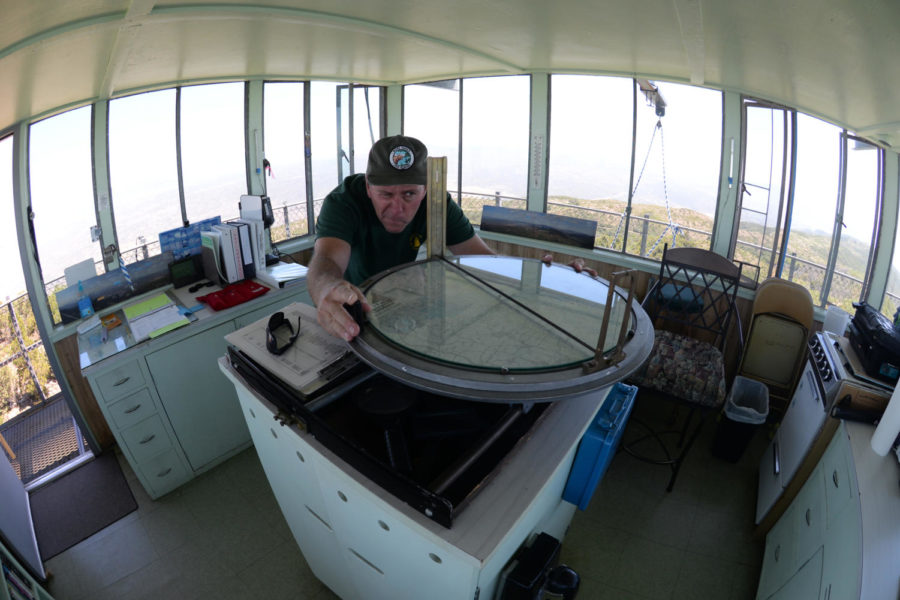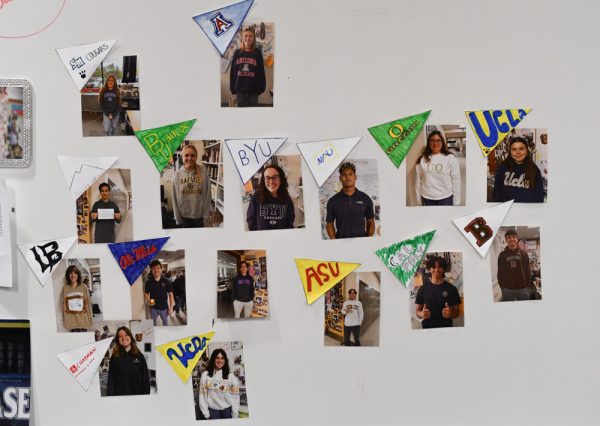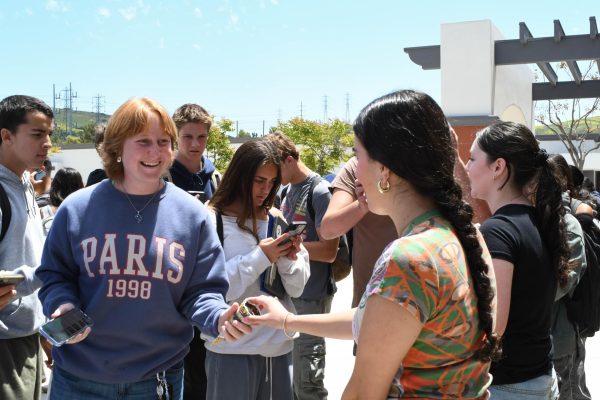Teacher Helps Revive the Role of Fire Lookouts
Once abandoned, lookout towers in area mountains are now staffed with volunteer lookouts who spot lightning strikes and wildfires
As wildfires continue to encroach on densely populated Southern California communities, the need for solutions to help limit the damage of the seemingly endless fire season is dire.
But history teacher, Bill Kaiser, is doing his part to ensure that the long-standing tradition of fire lookouts carries on, volunteering as a lookout during fire season in his free time.
“My wife and I have a little cabin up on Palomar Mountain and we can see one of the lookouts from there. We realized that it would be important to keep an eye on the community there because of the danger of fire,” said Kaiser.
Fire lookouts have been an integral part of the nation’s fire-fighting efforts since the early 1900s. But they experienced a decline in the 1970s and 1980’s because of factors like smog, haze, and budget cuts, according to Shane Harris, Chairperson and Training Officer for Forest Fire Lookout Association – San Diego Riverside Chapter (FFLA).
“We’re all that’s left of a tradition that disappeared a generation ago,” Harris told a group of trainees last April.
In recent years, fire lookouts have experienced a resurgence because of better air quality and a more pressing need for fire prevention as communities spread deeper into fire danger zones.
Kaiser volunteers with FFLA, which operates and staffs two lookout towers on Palomar Mountain with around 100 trained volunteers. There is also a tower staffed by U.S. Forest Service lookouts called Los Pinos, for a total of three. Lookouts are also in radio contact with a tower in Riverside County called Red Mountain.
“A typical shift lasts all day at one of the towers, sometimes 11 hours. When we see smoke we use a device called an Osborne Fire Finder, a low-tech but effective tool for determining a bearing and distance for a fire. This information is then radioed to a dispatch center and resources are deployed like ground crews, or aircraft to suppress the fire,” Kaiser told The Express.
Of the three lookout towers, Los Pinos is the farthest south, near the Mexican border. Boucher Lookout and High Point are both on Palomar Mountain in San Diego County and Red Mountain is in Riverside County. Lookouts at these four towers scan thousands of square miles of terrain daily, reporting smoke and lightning strikes when they occur.
Lookouts work under the U.S. Forest Service, helping protect the Cleveland National Forest, one forest made up of three non-contiguous districts stretching from southern Orange County to the border with Mexico. In that area is the wildland/urban interface where humans live closer to nature, but also closer to dangerous amounts of combustible materials.
Because people’s lives and property are at stake in wildfires, the job of a lookout is not only to watch over land in the Cleveland National Forest but also areas where people live.
“Because the federal and state funding to clear underbrush has been severely cut, our forests have built up more and more fuel each year, creating higher risk for bigger and more deadly fires. We must be diligent to call smokes in as fast as they happen,” said Kathy Wollman, an active FFLA lookout.
A network of live cameras called HPWREN, a project at the University of California, San Diego, offers a glimpse of what lookouts see from the towers and the terrain they keep an eye over. They are accessible to the public online.
With the help of seasoned lookouts, researchers from UCSD are developing artificial intelligence technology that might one day be able to detect smoke, but the human eye and the role of the lookouts continues to be integral in keeping communities safe.
Ramon Thomas, a retired firefighter battalion chief, has been volunteering for FFLA for nine years. After years of fighting fires himself, Thomas realizes the importance of utilizing the human eye in addition to new technology.
“Electronic technology is there, but it still takes an eye to read it,” said Thomas. “The earlier smoke is spotted, the earlier an initial attack can be made to minimize the fire damage,” he said.
“While being a fire lookout comes with a lot of responsibility and duty, it provides an opportunity to be at peace with nature and see the world in a way that not many get the opportunity to experience,” said Natalie Flute, who has been a lookout for two years.
“If you enjoy the outdoors, you would really like it because you get to see changes in the weather over a period of time and it’s almost like a meditation. You get to experience being alone and looking into your own thoughts and thinking about the Earth and the landscape that we live in that’s so beautiful,” said Kaiser.
Your donation will support the student journalists of San Juan Hills High School. Your contribution will allow us to cover our annual website hosting costs.

Warren Unzueta is very excited to begin his endeavor on the Express Newspaper during his junior year here at SJHHS and can not wait to see what the future...

Mr. Kaiser is currently in his 24th year as a media adviser in CUSD and was San Juan Hills High School's 2019 Teacher of the Year. He also teaches AP government...












James Geschwindner • Nov 19, 2019 at 7:22 PM
I did this as a full time job in New Hampshire for 5 years and treasured and cherished every second. The greatest job I ever had.
Keep up the great work my brothers.
73, N1PZP James